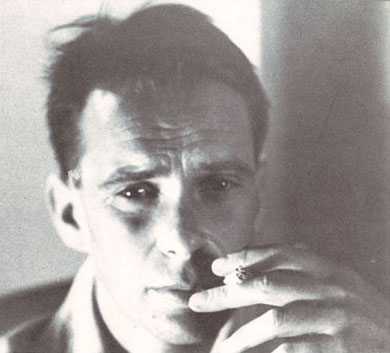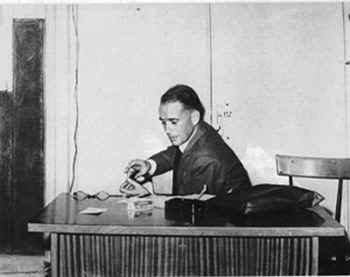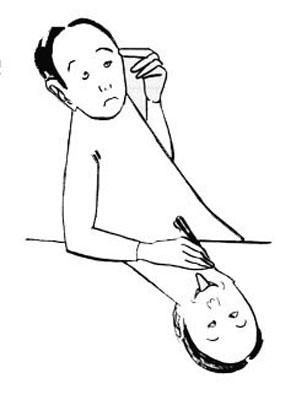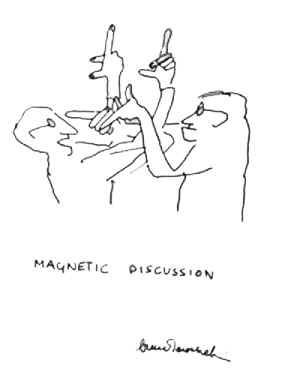









 |
|
A Biography of Bruno Touschek

| Bruno
Touschek had a brilliant mind and an amusing personality. He
was born in Vienna on February 3, 1921, son of Franz Xaver and
Camilla Weltman. He attended school in his hometown but in 1937,
not having
been allowed to finish high school since his mother was Jewish, he
had to leave his school and pass the final year exam in another one as
an
external student. He
began to attend University courses in physics and mathematics
in
Vienna, but again he had to quit
because of racial
reasons.
Thanks to some friends, Touschek could keep on studying in
Hamburg,
where nobody knew about his origins. In order to make a living, the
young
Austrian had to do several jobs at the same time. For a long period he
worked in
the Studiengesellschaft für Elektronengeräte, a company affiliated to
the
Dutch firm Philips, where "drift tubes", forerunners of the
klystron, were being developed. In 1943 he was invited by Rolf Wideroë
to
cooperate with him in building a betatron. When Touschek was
arrested by
Gestapo in 1945, Wideroë went to see him in prison and during these
visits they
kept on talking about the betatron and, still in prison, he conceived
the idea
and developed the theory of "radiation damping" for electrons
circulating in a betatron. After
having been arrested by Gestapo and having escaped by
chance
the concentration camp, in 1946 he
graduated at the University of Göttingen and began to work at the Max
Planck Institut. In
February 1947 Touschek moved to Glasgow on a fellowship of the
Department of
Scientific and Industrial Research.
Afterwards, he was appointed Official Lecturer in Natural Philosophy at
the
University of Glasgow, position that he kept until he left for Rome in
1952. Once
there, he decided to stay permanently in that town, and he
got the
position of researcher in the
Istituto Nazionale di Fisica Nucleare. |
|

Touschek in Catania (1964)
|
|
Three years later he
went back to Glasgow to marry Elspeth
Yonge, daugther of a well-known professor of Zoology at the
University of Glasgow, who gave him two children.
On March 7, 1960 Touschek
held a seminar at the Laboratori Nazionali di Frascati, demonstrating
for the first time the importance of a systematic study of
electron-positron collisions (e+ e- ) and how this
could be achieved by
constructing a single magnetic ring in which
bunches of electrons and positrons circulate at the same energy E, but
in opposite directions. After this, along with Carlo Bernardini,
Gianfranco Corazza and Giorgio Ghigo, he began to work on a project for
the first e+ e- storage ring, essentially designed as a prototype for
checking the feasibility of accelerators based on the ideas
set forth during the seminar. This first machine for the study of
collision between a particle and an antiparticle is known as AdA (Anello di
Accumulazione e+ e- ). It wasn't a coincidence that this was the name
of his dear aunt Ada, who had been very close to Touschek when he
first settled in Rome. He would visit her quite often in her villa in
Albano, and she would give him a number of advice and attentions,which
he didn't always seem to appreciate. After
the operation of AdA at Orsay, Touschek's
"experimental period" had come to an end, but it
wasn't so for his interest and
participation in the development of
the e+
e- rings. He followed with great enthusiasm
the phases of the design and construction of ADONE (1965-67) led by
Fernando
Amman.
Along with his scientific genius "Bruno possessed an unusual skill in
caricaturing his sorroundings and local costums, which he would draw
with a pen on the first piece of paper which came to hand, during the
degree examination of Faculty sessions, or during the various meetings
of the commissions or working groups dealing with the activities of the
Institute or of the Laboratori Nazionali di Frascati" (E. Amaldi).
|
 |

Touschek's drawings
|
Since 1953
Touschek had been teaching at the University in Rome
and later
also in Pisa; but because of the
strict Italian law, Touschek's career in the University was slow, and
he became
"professore ordinario" only at the beginning of 1978.
Shortly after, on May 25 1978, in the University Hospital of Innsbruck,
Bruno
Touschek died, after a long-time illness.
"He was the initiator, but also the element of continuity during the
ten
golden years of the Laboratories (of Frascati) , the person
that had
a great idea and allowed it to be materialized by
others;
his scientific and human qualities, I believe, were decisive in
maintaining the
connections which have been essential in
achieving success" (by F. Amman). So Bruno Touschek will always be
remembered as a man who "led an intense and vigorous life and one
who, by his example and friendliness, helped others to
achieve
greater happiness and awareness in
their own lives" (by P.I. Dee) .
|
|


